After Mark Zuckerberg announced that Facebook would transition from being a “Social Networking Company” to a “Metaverse Company,” along with Epic Games (the developer of the famous game Fortnite) raising $1 billion with the goal of turning the game into a Metaverse, the concept of the Metaverse has become a hot keyword and attracted the attention of many people.
In this article, let’s explore what Metaverse is and learn about investment opportunities in the Metaverse in the Crypto market!
What is Metaverse?
The Metaverse is a virtual world created from the Internet and augmented reality tools (such as VR, AR, or other technologies), aiming to provide the most realistic experiences for users.
In the Metaverse, it’s a world that exists parallel to the real world. There, barriers to creativity are almost eliminated through tools and features provided by developers.
If you’re still unclear about this abstract concept, the movie “Ready Player One” is a typical example of the Metaverse.
Origin of Metaverse
After understanding the basics of what Metaverse is, let’s explore the origin of this concept.
Is the Metaverse a newly emerged term in the era of developing information technology like today?
The truth is not so. The term “Metaverse” was first mentioned in the science fiction novel “Snow Crash” by author Neal Stephenson in 1992. In this work, the Metaverse is described as a place where people can interact with each other through a deeply cyberpunk space.
Thus, the concept of the Metaverse has been formed for quite some time, even before the Internet age. The word “Metaverse” itself is composed of two words:
- Meta: Meaning “beyond” or “beyond.”
- Verse: In the word “Universe” means “universe.”
Therefore, the concept of the Metaverse implies a world “beyond the existing universe,” or in other words, a world parallel to reality.
The origin of the Metaverse can be traced back over 30 years ago, before the Internet developed as it is today. It’s not a new concept but has been shaped in the imagination of science fiction writers for a long time.
What are the characteristics of the Metaverse?
Some key characteristics of the Metaverse include:
- Sustainability: The ability to sustain continuous operation and constant improvement.
- Immersion: The level of realism of the experience in the Metaverse, reflecting the ratio between virtual experience and reality.
- Openness: Allowing participants to connect or disconnect at any time. It is also an open space, not restricted in creativity.
- Economic System: There is an economic system parallel to reality, allowing easy asset transfer between the virtual world and the real world. Users can accumulate assets through creations in the Metaverse.
These characteristics show that the Metaverse brings a multidimensional, vivid, and highly interactive experience, as well as a separate economic system parallel to the real world.
Layers in the Metaverse ecosystem
The Metaverse is built on 4 main constituent layers:
- Foundation Layer: This is the platform layer for connectivity, which is the Internet network.
- Infrastructure Layer: In terms of infrastructure for the Metaverse, including hardware components that provide a realistic experience for users. In addition, key technologies such as Blockchain, AI, Big Data are also in this layer.
- Content Layer: This is the layer containing games, applications that allow users to immerse themselves in different virtual worlds, creating the most vivid experiences.
- True Metaverse Layer: This is the final layer, when the underlying layers have developed enough, will create a complete and true Metaverse.
The development process of the Metaverse goes as follows:
- The Internet platform layer is being upgraded, becoming faster and more convenient.
- The infrastructure layer is also being continuously invested and improved by technology giants.
- The content layer is gradually forming with games in the style of the Metaverse, waiting for perfection from the infrastructure layer.
When these platform layers develop fully, the true Metaverse will soon become a reality.
Some prominent Metaverse Games
Although current technology still cannot provide a perfect Metaverse experience as in “Ready Player One,” there are already many products and applications built based on the concept of the Metaverse.
Some typical examples:
- Minecraft: An open-world game that allows players to mine resources, build structures, and create their own worlds, while interacting with other players.
- GTA V: In multiplayer mode, players can interact, trade, and communicate with each other in an open world.
- Roblox: Allows players to create content, with VR support and an economic incentive system.
In the cryptocurrency market, there are also many games in the Metaverse style such as Decentraland, The Sandbox. These games allow players to create their own worlds, own assets in the form of NFTs, and exchange them in the marketplace.
However, current Metaverse applications still have many limitations:
The experience is not truly authentic due to the limitations of augmented reality technology.
The interaction between products is still very limited, especially with games not based on blockchain.
User creativity space is still limited.
Therefore, the true Metaverse has not yet been realized as in the work “Ready Player One.” But current applications have shown significant progress and enormous potential for Metaverse development in the future.
Why is the Metaverse becoming popular?
Throughout history, humans have always nurtured desires for exploration and overcoming: Crossing vast oceans, conquering towering mountains, exploring the mysteries of the universe,… However, with many barriers in terms of technology, finance, or limited resources, we cannot meet all these needs quickly.
Currently, with the explosive development of the Internet and technology, it seems that we have found a new solution to these challenges, which is to use the Metaverse.
For a true Metaverse, we can fully enjoy unlimited experiences and exploration while waiting for technology to develop for real experiences.
A clear example is the human desire to explore the universe: Traveling around the world today has become much easier and more common. However, gradually, exploring the Earth is no longer as attractive as before, our next goal is the universe.
However, developing rockets and infrastructure for space exploration is currently costly and time-consuming. Resource barriers cannot keep up with demand.
Therefore, we can use the Metaverse to experience space exploration based on experiments. Augmented reality technology will provide the most intimate and realistic feeling for humans.
As a result, with the Metaverse, we can experience exploring the universe closest to reality, at a much lower cost while waiting to overcome barriers.
In addition, with unlimited creative abilities in the Metaverse, humans will gain more inspiration for inventions beyond reality.
In the context of the current Covid-19 pandemic, as countries implement social distancing policies, the Metaverse becomes an ideal place for us to interact with each other in the most authentic way.
Potential of the Metaverse
How vast is the scale of the Metaverse?
With an immensely ambitious vision of constructing a parallel world alongside our reality, one can imagine the scale to which this market will grow.
Currently, statistical data indicates that the total global asset volume by the end of 2020 had reached $418.3 trillion. Therefore, it can be said that this is an immensely large market with plenty of opportunities for future development.
However, this is just a distant view of the future, so what is the recent situation like? According to research from LD Capital (a leading Blockchain technology investment fund in China), the Metaverse industry will consist of two main components:
- Hardware infrastructure: This includes industries involved in producing hardware such as chips, electronic components, augmented reality devices, etc., which are crucial infrastructure to enhance the experience within the Metaverse. According to research from The Business Research Company, in 2020, the value of this industry globally reached around $862 billion with an annual growth rate of 9.4%.
- Metaverse content: This encompasses all platforms (mostly games) that enable users to participate and immerse themselves in the Metaverse. This category also includes social networks or sharing platforms such as YouTube, TikTok, etc., but with the true Metaverse, these platforms will be directly integrated with games. Currently, the value of this industry is estimated to be around $170 billion.
So, although the Metaverse has not truly developed as intended in the end, what exists today already holds a value of trillions of dollars. This is not to mention that as augmented reality products become more widely adopted, they will serve as a foundation for even stronger growth in the Metaverse Gaming market.
Moreover, with the “Beyond the Universe” vision of the Metaverse, it is possible that in the future, all non-physical assets will be brought into the Metaverse to create a truly parallel world (even potentially surpassing the real world). From there, this industry could potentially reach hundreds of trillions of dollars.
Applications of the Metaverse
The Metaverse not only provides entertainment experiences but also opens up many applications in other fields such as healthcare, education, manufacturing, military, and many others.
For example, in the healthcare field, the Metaverse can create a virtual environment to help doctors research and develop new treatment methods without requiring too many resources and without posing risks to patients.
In the education field, an interactive virtual world can help students learn from top teachers. Learning combined with practical examples makes understanding easier and more vivid.
What do the tech giants think about the virtual universe Metaverse?
Mark Zuckerberg, Founder & CEO of Facebook
It’s no coincidence that the Metaverse has attracted significant attention from large companies with strong resources. The goal of the Metaverse is not only to meet daily needs but also to be a major step forward in creating a digital world parallel to the real world.
One of the first people interested in the Metaverse is Mark Zuckerberg, Founder & CEO of Facebook.
He shared about the Metaverse as follows: “Mobile internet can now meet many people’s needs from waking up to going to bed. Therefore, I don’t think the main purpose of the Metaverse is to get people to engage more on the Internet, but to allow people to participate in the Internet more naturally.”
In line with this statement, Facebook has invested in VR devices through the acquisition of Oculus and even renamed the company to Meta to focus on developing hardware infrastructure for the Metaverse.
In addition to Facebook, other major tech companies such as Google, Microsoft, Sony have also entered the Metaverse through the establishment of the XR Association – a union with the goal of developing “Experiential Reality.”
Tim Sweeney – CEO of Epic Games, the company behind the game Fortnite, has also shared his views on the Metaverse. He believes this is a very potential market and explains why Epic Games wants to develop Fortnite into a part of the Metaverse.
Furthermore, Tim Sweeney emphasizes that the Metaverse will not only be a world created by one company but will include many applications and interaction possibilities between different worlds.
In the Crypto market, Decentraland – a Metaverse application, has been represented by Dave Carr. He highlights the decentralized nature of the Metaverse and believes that Decentralization is necessary for users to have ownership and creative freedom in the Metaverse.
Why is Blockchain the ideal place to develop the Metaverse?
In fact, the Metaverse can be established on the basis of many different types of technologies. However, in a world that values unlimited creativity, interaction, and decentralized freedom like the Metaverse, it seems that Blockchain will be one of the key technologies of this world.
I will explain why right below!
Blockchain – The essential platform for the development of the Metaverse
When researching the theory of the Metaverse, we can see that blockchain technology will play a key role in building a true Metaverse.
As seen in Jon Radoff’s Infographic, the Metaverse industry is attracting the participation of many leading technology companies, including hardware, software, blockchain, gaming, etc. Among them, the Content layer – the content and experience – is seen as closest to the concept of the Metaverse. However, current platforms like Google, Facebook, Fortnite, Roblox still have some limitations:
- Limited interaction between platforms: Users cannot move or exchange digital assets between different virtual worlds.
- Digital assets do not truly belong to users: Virtual items in games can be lost due to policy changes or regulations.
- Lack of personalization and ownership: Users do not have real ownership rights to their digital assets.
Here, blockchain technology with prominent features such as:
- Scalability: Modern blockchains like Avalanche, Polkadot, Cosmos have addressed the issues of speed and scalability.
- Interoperability: Assets on different blockchains can be exchanged through Cross-chain technology.
- Ownership & Privacy: Digital assets in the form of NFTs (non-fungible tokens) help users hold ownership and control over their assets.
- Security: Blockchain technology provides high security for users’ digital assets.
Moreover, the strong development of DeFi (Decentralized Finance) also serves as a simple, flexible digital economy system to support economic activities in the Metaverse, such as trading goods, transferring assets, borrowing, payments, etc.
With the superior advantages of scalability, interaction, ownership, and security, along with the development of the DeFi ecosystem, blockchain technology can indeed become the key platform for building a true Metaverse – a more creative, interactive, and personalized virtual world.
Key Factors Driving the Development of Metaverse in Crypto
To build a truly comprehensive Metaverse within the Crypto space, there needs to be a combination of three main components:
- Optimized Blockchain Platforms: These serve as the foundational layer. There is a need for blockchains with good scalability, such as Polkadot, Avalanche, Cosmos, Solana, NEAR, Mina, etc. These blockchains will meet the requirements for performance and storage for the Metaverse.
- Dapps Serving the Metaverse: On top of blockchain platforms, decentralized applications (Dapps) serving various purposes of the Metaverse are necessary:
- Pure Metaverse Gaming platforms like Decentraland, The Sandbox.
- DeFi applications to develop the Metaverse economy, such as exchanges, lending services, payments, etc.
- NFT applications to build a digital asset system within the Metaverse.
- Cross-chain Bridges: This is an important factor for creating connectivity and interaction between virtual worlds and the Metaverse economy. Cross-chain technologies will enable the exchange and conversion of digital assets across different blockchains.
Currently, despite significant progress, the above factors are still not fully developed:
- New blockchain platforms only partially solve the speed and scalability issues.
- Dapps serving the Metaverse have not yet created experiences as compelling as traditional games.
- Cross-chain technology still has many loopholes, leading to related hacking incidents.
Therefore, for the Metaverse in the Crypto space to develop, companies and developers need to continue improving and perfecting these core elements. When these three components are effectively combined, the Metaverse will be able to break through and grow significantly.
Metaverse Development Trends
Metaverse – Still an Idea for the Future
Although information technology is advancing rapidly, the Metaverse is still only a concept for the future and not yet the time to explode.
There are several reasons for this assessment:
- VR technology is still limited: Currently, VR devices on the market are still relatively expensive and not widespread. VR-related experiences are also not truly compelling, making developers hesitant to invest in this field.
- The VR market is still small: According to estimates by Grand View Research, the Virtual Reality market reached only about $22 billion in 2021 – a modest figure compared to the potential for future development. However, the growth rate of this industry is expected to reach about 18% per year, with an estimated scale of $70 billion by 2028.
- Preparing for the Metaverse: Although VR hardware is a key factor for the Metaverse, content development will also occur simultaneously, rather than waiting for VR to be perfected. Tech giants like Facebook, Epic Games, Roblox, etc., have begun investing in and preparing for the future of the Metaverse.
In summary, the Metaverse is still only a theoretical concept for the future, not yet the time to explode. However, with the participation of many major technology companies, along with the advancement of VR technology, the Metaverse is expected to become a highly potential industry in the future.
Investment Opportunities in the Metaverse Ecosystem
With the development of blockchain technology, the Metaverse is expected to become a large and diverse virtual space in the future. So where are the investment opportunities in the Metaverse?
- Blockchain Infrastructure Platforms: The blockchain platforms for the Metaverse need to have the following characteristics:
- High scalability to meet widespread usage needs.
- Low transaction fees, fast speeds, and high security.
- Large storage capacity and unlimited creativity. Examples include Solana, Mina, Avalanche, Polygon, Cosmos, NEAR, Flow, Theta, etc.
- Dapps Serving the Metaverse
-
- Platforms like Decentraland, The Sandbox for Metaverse Gaming.
- Open-world gaming platforms that allow unlimited creativity.
- NFT marketplaces.
- DeFi platforms, especially those facilitating asset transfers between the real world and Crypto.
- Cross-chain and Interoperability Applications: These are important platforms for connecting Metaverse ecosystems, such as:
- Liquidity Cross-chain applications.
- Conversion and exchange of NFTs across blockchains.
However, it’s important to note that the Metaverse is still a concept for the future, not yet the time for a strong explosion. Current Metaverse platforms like Sandbox, Decentraland are still not attractive enough.
Therefore, instead of investing directly in Metaverse projects, investors can seek opportunities from the “small waves” when major tech giants provide information about the Metaverse. And when the infrastructure and content of the Metaverse become more complete, the true explosion of the “Blockchain Metaverse” will occur.
Related: a16z Injects $30 Million into Gaming-Related Startups
Conclusion
Through this article, I have provided you with basic information about the Metaverse, as well as the potential development of this industry up to trillions of dollars.
The development of technology along with the impact of the pandemic has turned the Metaverse – a concept that has existed for nearly 30 years – into a hot topic recently. With the participation of major technology giants, we have every reason to believe in the enormous potential of the Metaverse.
Notably, blockchain technology is expected to play a key role in the development process of the Metaverse. However, the Metaverse is still a relatively new concept, requiring more time and infrastructure to truly explode in the future.
This article is compiled based on my personal perspectives, along with some analysis from research sources such as The New York Times and Coindesk. You can refer to these additional sources of information.


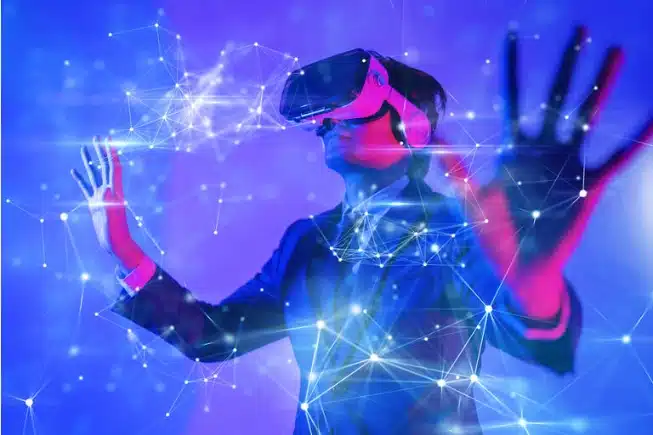


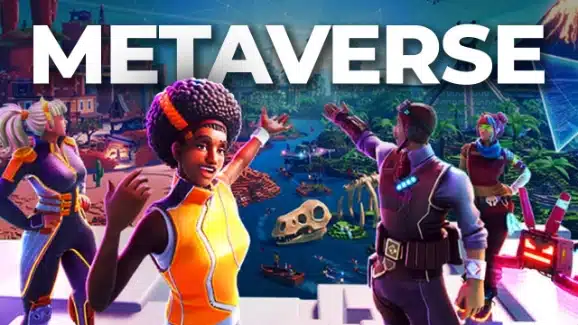

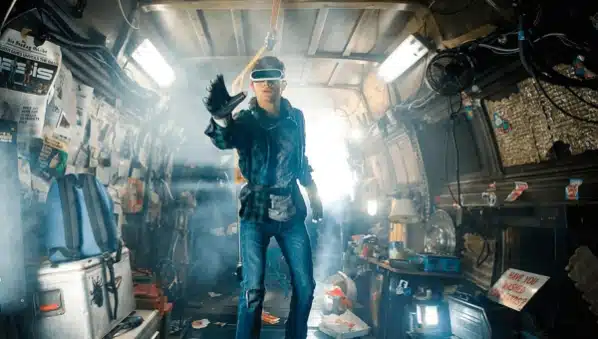
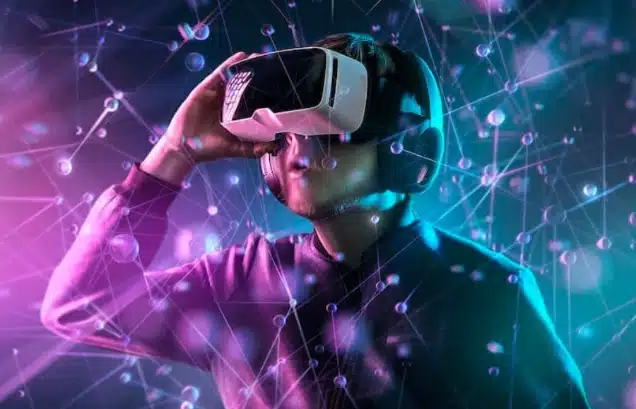

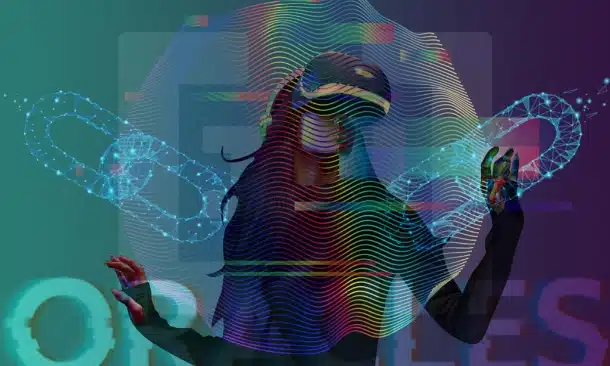

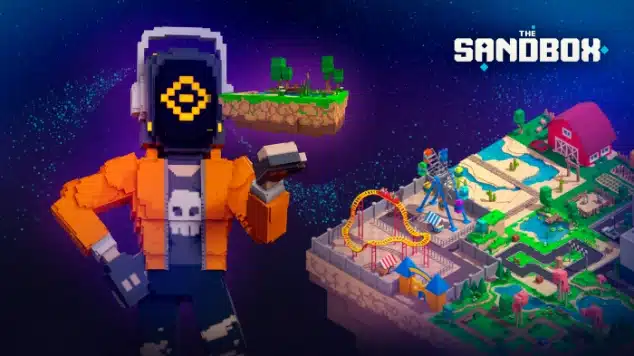




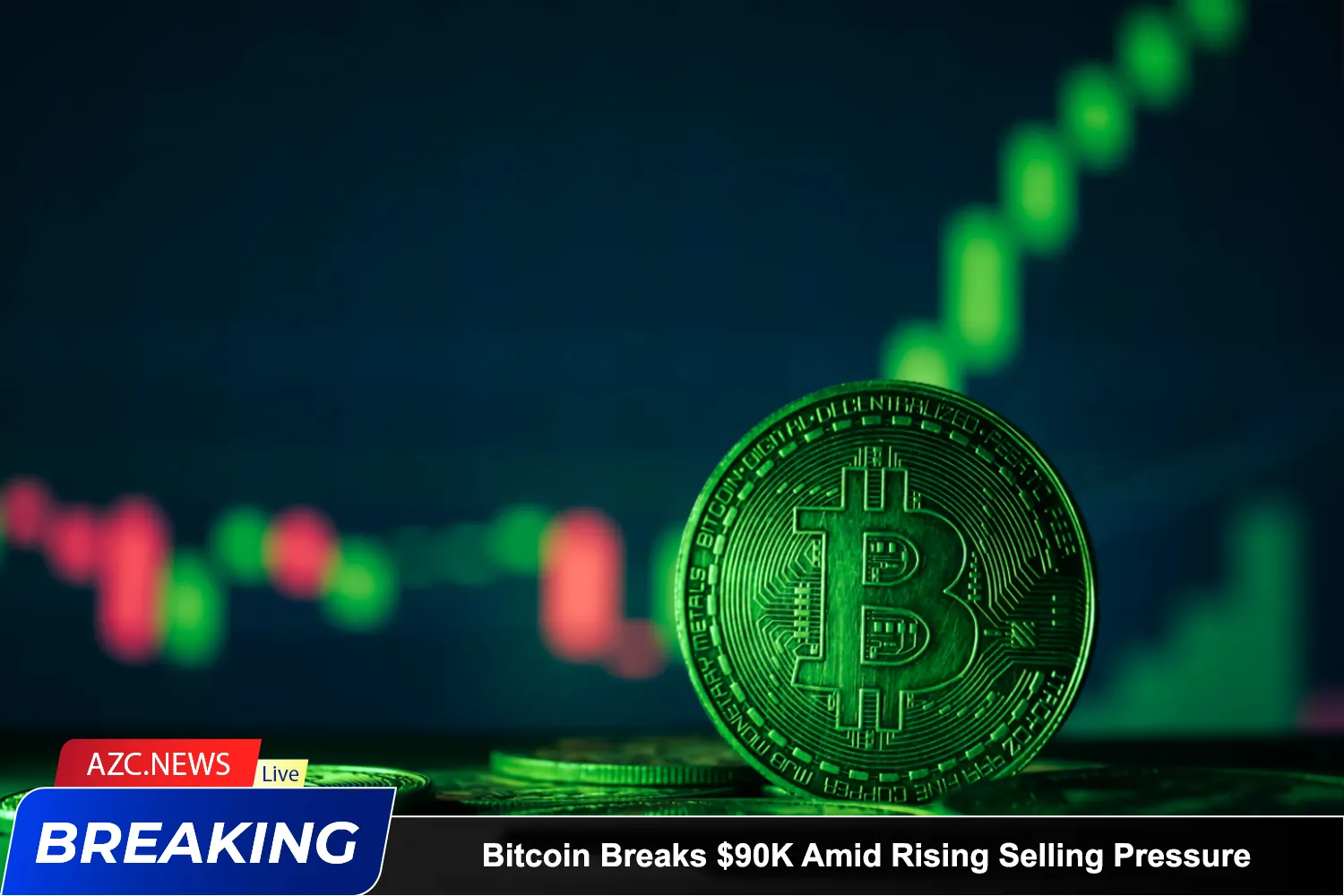

It’s a great article.
Great services
Waww
Very vivid information
You nailed it